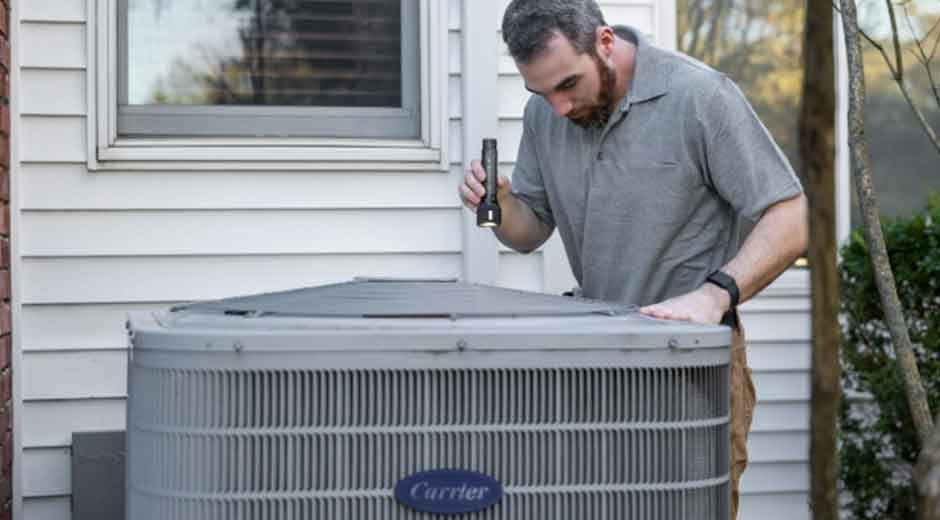Homeownership can be rewarding, but it comes with responsibilities—and unexpected repairs often lead to hefty bills. The good news? Many of the most common and expensive home repairs can be avoided with a little routine care and some simple DIY fixes. You don’t need to be a pro or spend a fortune on tools. All it takes is knowing what to look for, acting early, and staying consistent with your upkeep.
This guide walks you through eight DIY strategies that will help extend the life of your home’s systems and surfaces—saving you time, stress, and money in the long run.
- HVAC System: Keep It Cool and Efficient
Your HVAC system does a lot behind the scenes. It keeps your house cool in the summer, warm in the winter, and the air clean all year long. But if you ignore it, small issues can build up fast. Changing the air filter is one of the easiest ways to keep things running smoothly. When filters get clogged, airflow is restricted. That makes the system work harder than it should, which shortens its lifespan and spikes your energy bills. Aim to replace the filter every one to three months, depending on usage and the type of filter you’re using.
Another smart move is to rinse out the condensate drain line a few times a year. Over time, this line can collect algae or gunk that blocks the flow of moisture, which can lead to mold growth or water backing up into your HVAC unit. Flushing it with a little warm water and vinegar helps clear the line and keeps your system safe.
These simple habits can extend the life of your HVAC system and keep it running efficiently.
- Fix Leaky Faucets Before They Ruin Cabinets
A dripping faucet may not seem like a big deal at first, but it adds up over time—both in water waste and potential damage. The real problem is what you don’t see: the slow, steady leak can soak the cabinet underneath and create mold or rot. Often, the fix is as simple as replacing a worn-out washer or O-ring. With a basic wrench and a few spare parts, you can stop the drip in less than an hour. It’s a quick job that prevents major repairs down the line, especially in kitchens and bathrooms where moisture issues can get expensive fast.
- Protect Your Roof with Quick Visual Checks
You don’t need to climb up on your roof to keep it in good shape. A quick scan with binoculars once in spring and once in fall is usually enough. Look for shingles that are missing, cracked, or curling. Check for piles of debris in corners or sagging spots that might indicate a leak. These signs often show up before the real damage begins. If caught early, you might only need to replace a few shingles or reseal a joint—far easier than fixing drywall, insulation, or structural beams that have been soaked from a hidden leak.
- Unclog Gutters and Downspouts Regularly
When gutters work properly, they channel water away from your foundation. When they’re clogged with leaves or dirt, water overflows and pools around the base of your house. That’s how you end up with basement leaks or cracked foundations. Cleaning gutters in the spring and fall is simple: use gloves, a scoop, and a hose to clear out debris. Make sure the downspouts are aimed away from the house and have at least a three-foot extension. A little time on the ladder saves a lot of time (and money) fixing water damage.
- Caulk and Seal to Stop Air and Water Intrusion
Cracked or missing caulking around windows, doors, and tubs might not look serious, but they allow in moisture and air. That means you could be inviting mold, rot, and higher utility bills without realizing it. Caulking is one of the easiest DIY jobs—just cut away the old material, clean the surface, and apply a fresh line. It dries quickly and lasts for years. You’ll notice the difference in indoor comfort and lower heating or cooling costs almost immediately.
- Clean Dryer Vents to Prevent Fires
Dryers are responsible for thousands of house fires each year, and the main culprit is lint buildup. It’s not just the lint trap inside the machine—you also need to clean the vent hose that runs from the dryer to the outside. Over time, lint collects along the walls of the duct, reducing airflow and creating a serious fire hazard.
Every six months, disconnect the vent and vacuum it out using a long attachment. You should also check for crushed or bent sections of the hose that could restrict airflow. Outside, make sure the vent flap opens freely and isn’t blocked.
These small steps not only keep your home safer, but they also help your dryer work more efficiently and reduce wear on the motor.
- Inspect Toilets for Silent Leaks
Toilets are one of the biggest sources of water waste in a home, especially when they leak silently. These leaks often happen inside the tank and go unnoticed for weeks or months.
A quick way to check is to add a few drops of food coloring to the water in the tank. Wait 15–20 minutes without flushing. Does the color show up in the bowl? If so, you’ve got a leak.
In most cases, the problem comes from a worn-out flapper or a faulty fill valve. Both parts are inexpensive and can be replaced with basic tools. Fixing these small issues saves water and prevents long-term damage to the flooring or subfloor around the toilet.
- Tighten Railings and Loose Screws in High-Traffic Areas
Loose railings, wobbly steps, or shaky cabinet handles might seem like minor annoyances, but they can lead to injuries or larger repairs if ignored. Areas like stairs, decks, and entryways see a lot of movement and stress over time. Screws work loose, wood swells and contracts, and joints shift.
Walk through your home once a month and look for anything that feels unstable. Tighten screws and bolts where needed. If a screw has lost its grip, use a slightly larger one or add some wood glue and a toothpick to fill the hole before reinserting it.
These small adjustments keep your home safe and solid without much effort.
Home maintenance doesn’t have to feel like a burden. By staying consistent with these small tasks, you protect your investment and avoid those sudden, high-cost repairs that can catch you off guard. Whether it’s cleaning air filters, inspecting toilets for leaks, or tightening a railing, each effort makes your home stronger, safer, and more efficient. These habits take just a little time, but the payoff lasts for years. Keep them on your seasonal checklist, and you’ll spend more time enjoying your home and less time fixing it.






